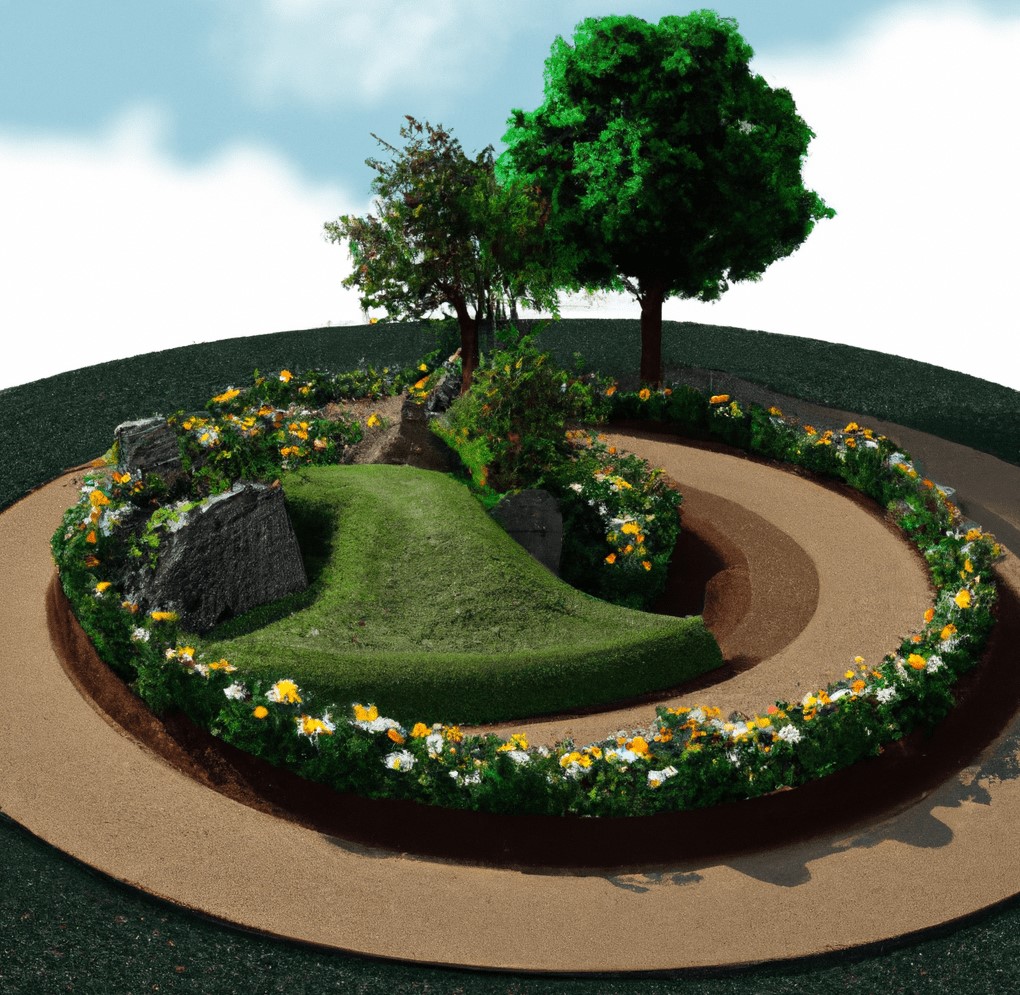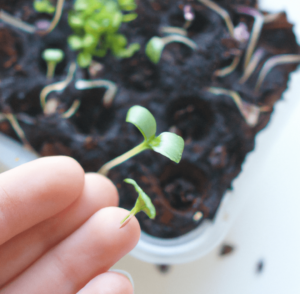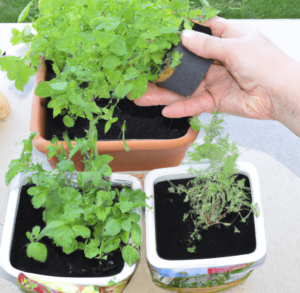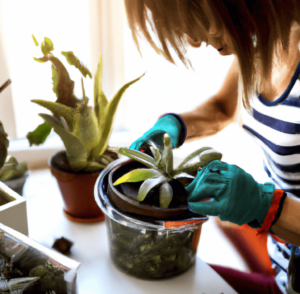If you’re a gardener looking to try something new, hugelkultur gardening may be worth considering. This unique gardening method involves building raised beds out of wood, and then filling them with organic soil and plants. In this article, we’ll take a closer look at what hugelkultur gardening is, how it works, and why it’s a great option for anyone looking to grow their own fruits, vegetables, and herbs.
Hugelkultur Gardening
Hugelkultur, or “hill culture” in English, is a type of gardening that involves building raised beds out of wood and other materials. These beds are then filled with organic soil, compost, and plants. The aim of hugelkultur gardening is to create a self-sustaining ecosystem that provides plants with the nutrients they need to thrive.
One of the key benefits of hugelkultur gardening is that it allows gardeners to grow plants in a more sustainable and environmentally friendly way. By using wood and other organic materials to build the beds, hugelkultur gardening helps to reduce waste and minimize the need for chemical fertilizers and pesticides. Additionally, hugelkultur gardening can help to conserve water, as the wood in the beds helps to retain moisture and prevent evaporation.
Hugelkultur is a gardening technique that involves creating raised beds using a mixture of compost, branches, and logs. This technique is often used in permaculture and is known for its ability to retain moisture and provide plants with the nutrients they need to grow.
To create a hugelkultur bed, the first step is to find a suitable location and dig a trench. Next, branches and logs are placed in the trench, followed by a layer of compost and soil. Plants are then planted on top of the bed, and the bed is watered regularly to help the compost and branches break down over time.
The use of branches and logs in hugelkultur helps to create air pockets in the soil, which allows for better aeration and water retention. This can be especially beneficial in areas with poor soil quality or limited access to water.
In addition to providing plants with the nutrients and moisture they need to thrive, hugelkultur beds can also help to reduce waste by using materials that would otherwise be discarded. This makes hugelkultur a sustainable and eco-friendly gardening technique.

How Does Hugelkultur Gardening Work?
To create a hugelkultur bed, gardeners first need to gather materials such as logs, branches, twigs, leaves, and other organic debris. These materials are then arranged in a mound or raised bed shape, with the larger pieces of wood on the bottom and the smaller pieces on top. Once the wood has been arranged, it is covered with a layer of soil and compost, and plants are then added.
Over time, the wood in the hugelkultur bed will begin to decompose, providing the plants with a rich source of nutrients. As the wood breaks down, it also creates air pockets, which help to improve the structure of the soil and promote healthy root growth. Additionally, the wood helps to retain moisture, providing plants with a consistent supply of water.
Why Choose Hugelkultur Gardening?
There are several reasons why gardeners may choose to try hugelkultur gardening. Here are a few of the key benefits:
- Sustainable and environmentally friendly: By using wood and other organic materials to build the beds, hugelkultur gardening helps to reduce waste and minimize the use of chemical fertilizers and pesticides.
- Improved soil structure: The wood in the hugelkultur bed helps to improve the structure of the soil, making it more porous and well-draining. This can help to promote healthy root growth and improve the overall health of the plants.
- Enhanced water retention: The wood in the hugelkultur bed helps to retain moisture, providing plants with a consistent supply of water. This can be especially beneficial in dry or drought-prone regions.
- Increased productivity: By creating a self-sustaining ecosystem, hugelkultur gardening can help to increase the productivity of your garden. With a rich source of nutrients and a consistent supply of water, plants are able to thrive and produce more fruit and vegetables.
Overall, hugelkultur gardening is a unique and sustainable way to grow your own fruits, vegetables, and herbs. Whether you’re a seasoned gardener looking for a new challenge, or a beginner just starting out, hugelkultur gardening is worth considering.
Hugelkultur Bed
Hugelkultur gardening is a popular activity that many people enjoy. One of the key components of a garden is the bed, which is an area designated for plants and other flora. In a gardening bed, plants are usually arranged in a specific pattern or layout, and the bed may be raised to provide better drainage and improved access for the gardener.
Hugelkultur gardening beds can be created using a variety of materials, such as branches, logs, or other natural materials. These materials can be arranged to create a border around the bed, or they can be used as a raised bed to provide better drainage and soil conditions for the plants.
Another important aspect of gardening beds is the use of compost. Compost is a mixture of organic materials that are decomposed and broken down into a rich, fertile soil. This soil is ideal for growing plants and can provide essential nutrients and moisture to help the plants thrive.
In summary, a bed in the context of gardening is an area designated for plants and other flora. It can be created using natural materials like branches and logs, and the use of compost can help improve soil conditions and provide essential nutrients for the plants.
In hugelkultur gardens, a bed is a piece of land that is used to grow plants, such as vegetables, flowers, and herbs. A garden bed is typically filled with organic soil, which provides the plants with the nutrients they need to grow. Some gardeners use logs or other materials to create raised beds, which can help to improve drainage and prevent pests. Raised beds can also be easier to tend to, especially for gardeners who may have difficulty bending over.
Wood Material for Gardens
Wood is a type of material that is commonly used in a variety of applications. It is made up of the hard, fibrous tissue that makes up the stems, branches, and roots of trees. Wood is often used as a building material for structures like houses, as well as for making furniture and other household items.
Wood can also be used as a fuel for cooking and heating. It is commonly used in the form of logs that are burned in a fireplace or wood-burning stove. Wood can also be used to smoke food, adding flavor and tenderness to meats and other dishes.
In the context of hugelkultur gardening, wood is often used as a material for making compost. Compost is made by mixing together organic materials like leaves, grass clippings, and food waste, and allowing them to break down into a rich, soil-like substance that can be used to improve the health and fertility of garden soil. Wood chips and branches can be added to the compost pile, helping to provide structure and aeration as the materials break down.
Overall, wood is a versatile and useful material that plays a key role in many aspects of our daily lives.
Composting in Raised Lumber Beds
Composting is a great way to create rich, organic soil for your garden. One way to compost is by using raised lumber beds, which are essentially boxes made out of wood that are used to contain compost materials. These beds are often placed in a convenient location in the garden, and can be filled with a variety of organic materials such as leaves, grass clippings, and food scraps. As these materials break down, they create compost, which can be used as a natural fertilizer for your plants. Not only does composting help to improve the health of your soil, it also reduces the amount of waste that ends up in landfills.
Growing in Hugelkultur Garden
Growing in a Hugelkultur garden can provide many benefits, both for the individual and for the environment. Gardening allows people to grow their own food, providing them with fresh, healthy produce. It can also be a relaxing and enjoyable hobby, providing a sense of accomplishment and connection to the natural world.
To start a garden, you will need to prepare a space for your plants to grow. This typically involves clearing an area of weeds and debris, and then creating a raised bed for your plants to grow in. Raised beds can be made from a variety of materials, including lumber, bricks, or even old tires. Once your bed is in place, you can begin planting your seeds or seedlings.
Gardening can be a rewarding hobby, providing fresh produce and a sense of accomplishment. It can also provide a number of health benefits, such as improved physical fitness, mental health, and stress relief. So why not start your own garden today and experience the benefits for yourself?
Materials
In gardening, a number of materials are commonly used to help plants grow and thrive. Some of the most common materials used in gardening include bed, soil, garden, wood, and other plant-related items.
A bed is a piece of land that is specifically designated for growing plants. It is usually a raised area of soil that is surrounded by wood or other materials to contain the soil and help plants grow.
Soil is a crucial material in hugelkultur gardening, as it provides the foundation for plants to take root and grow. Different types of soil have different characteristics and can support different types of plants. For example, some soil is better suited for growing vegetables, while other soil is better for growing flowers.
Gardens are areas that are specifically designed for growing plants. They can be large or small, and can be found in a variety of locations, including in people’s yards, on rooftops, or in public parks.
Wood is another common material used in hugelkultur gardening. It can be used to create raised beds, trellises for climbing plants, or other garden structures. Wood is also often used as a mulch, which helps to retain moisture in the soil and protect plants from extreme temperatures.
Overall, gardening involves the use of a wide variety of materials, including bed, soil, garden, wood, and many others, to create the conditions that plants need to grow and thrive.
Raised Garden Beds for Hugelkultur Garden
Raised garden beds are a type of garden structure that is built above ground level, often using lumber or other materials to create the frame. These beds are a popular choice for many hugelkultur gardeners because they allow for better drainage, easier access to the plants, and improved soil quality.
To create a raised hugelkultur garden bed, you will need to gather materials such as lumber, compost, and branches. You can use the lumber to build the frame of the bed, and then fill it with a mixture of compost and soil. The branches can be used as stakes to support any taller plants that you might want to grow in the bed.
Once your raised garden bed is built, you can start planting your favorite flowers, vegetables, or herbs. Because the soil in the bed is elevated, it will be easier to care for your plants and monitor their growth. Plus, the added compost will provide essential nutrients to help your plants thrive.
Soil in Gardening
Soil is an essential element in gardening, as it provides a base for plants to grow and obtain the nutrients and water they need to thrive. Soil is made up of a mixture of organic matter, such as leaves, branches, and logs, as well as inorganic materials like sand, clay, and rocks. Decomposing organic matter, such as compost, can help improve the quality of soil and make it more fertile for growing plants.
In hugelkultur gardening, soil is often amended with compost or other organic materials to improve its ability to support plant growth. This can be especially important in areas where the natural soil is not well-suited for growing food crops. By adding organic matter to the soil, gardeners can help improve its structure, increase its ability to retain moisture, and provide plants with the nutrients they need to grow.
Overall, soil plays a crucial role in hugelkultur gardening and is an essential element for growing healthy plants and vegetables. By understanding the composition of soil and the ways in which it can be amended, gardeners can help ensure that their plants have the best possible chance of thriving and producing delicious food.
Plants in the Hugelkultur Garden
Plants are an essential part of any garden, providing beauty and life to the area. In order to thrive, plants need a few key things, including soil and sunlight. The soil in a hugelkultur garden is important because it provides plants with the nutrients they need to grow. In addition to nutrients, the soil also helps plants anchor their roots and provides a medium for water and air to circulate.
Planting in a garden can also involve adding logs or other organic materials to the soil. This is known as “mulching,” and it can help improve the health of the soil by adding nutrients and improving its structure. Mulching can also help regulate the temperature of the soil and prevent moisture from evaporating too quickly.
Gardening is a popular pastime for many people, and the word “garden” itself comes from the Old English word “geard,” which means “enclosure” or “yard.” Today, gardens can be found in a variety of different settings, from small urban gardens to large rural plots. No matter the size or location, a well-tended hugelkultur garden can be a source of beauty, relaxation, and enjoyment.

Gardening
Gardening is a popular hobby and pastime that involves the cultivation of plants and flowers. Many people choose to garden in order to grow their own fresh fruits and vegetables, while others simply enjoy the beauty and tranquility of a well-maintained garden.
One of the most important aspects of gardening is the use of organic soil. Organic soil is soil that is free from synthetic fertilizers and pesticides, and is rich in nutrients and beneficial microorganisms. This type of soil is ideal for growing healthy plants, as it promotes natural growth and helps to prevent the spread of diseases.
To create a garden, you will need to prepare a bed. This can be done by clearing a space in your yard, and then adding layers of organic soil and compost. You can also use lumber to create raised beds, which can be easier to maintain and will help to improve drainage.
There are many benefits to gardening, including the opportunity to grow your own fresh and healthy food. In addition, gardening can also provide a sense of accomplishment and satisfaction, and can even help to reduce stress and improve mental health. Additionally, gardening can also provide an opportunity to spend time outdoors and connect with nature.
Bottom Line: Hugelkultur Gardening is a Practical Gardening Method for Gardeners
Hugelkultur gardening is a method of creating raised garden beds that involve building up a mound of woody material, such as branches, logs, and twigs, and covering it with soil. The woody material is used to retain moisture and provide nutrients to the plants growing in the bed. This method of gardening is often used in permaculture systems and is considered to be a sustainable and low-maintenance method of gardening, as it can help to reduce the need for irrigation and soil amendments. In addition, hugelkultur beds can be created on sloping or uneven ground, making them an ideal choice for gardeners with challenging soil conditions.
If you’re interested in the hugelkultur gardening, you may also be interested in core gardening and hydroponics gardening.







